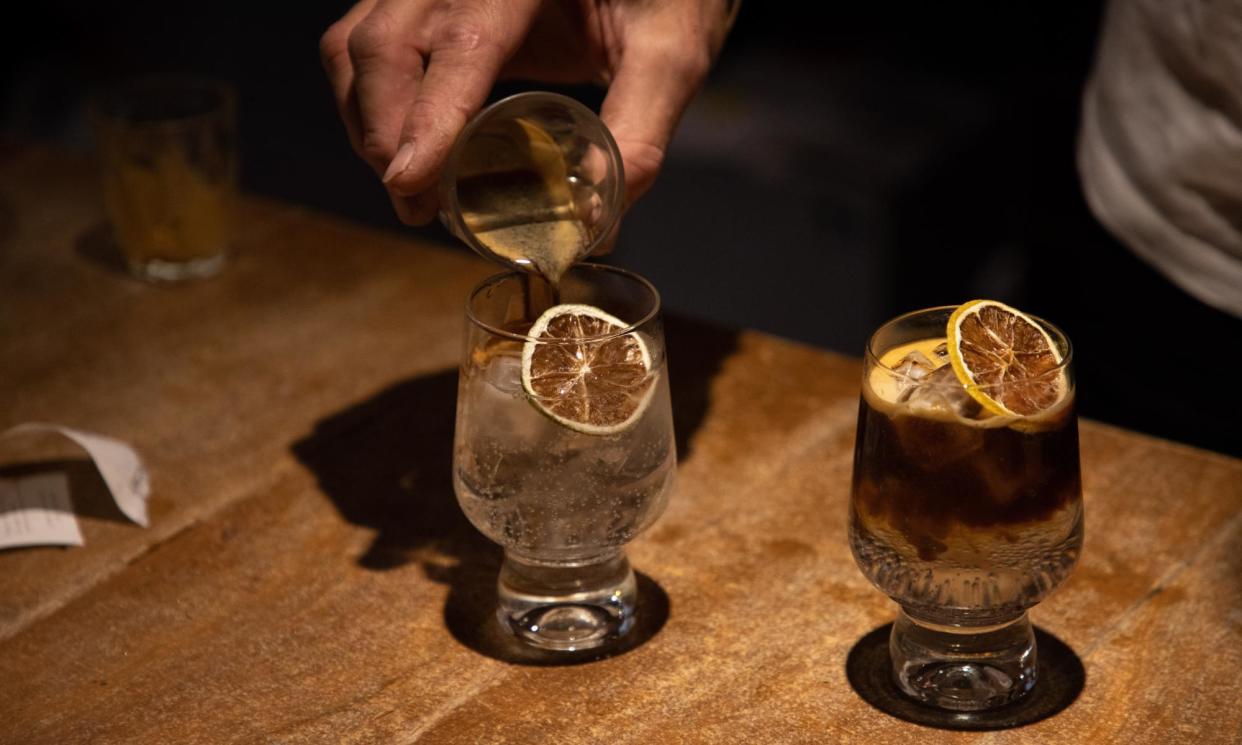Espresso and tonic: rise in tonic water popularity leads to experimental mixes

Tonic water first appeared in early 19th-century India when medicinal quinine was mixed with soda and sugar and given to British soldiers to prevent malaria. The first known record of its pairing with gin was in 1868 from the Oriental Sporting Magazine, where partygoers called for the cocktail and thin cigars at the end of a horse race in Lucknow, India.
But since then, as the popularity of non-alcoholic beverages and demand for new flavours grows, drinkers have been mixing tonics with more surprising tastes. In recent years, it has been found in everything from port and tequila to coffee, with younger drinkers and those interested in the health benefits of quinine driving the trend, according to industry experts.
Oliver Winters, a global communications director at the drinks company Fever-Tree, said in recent years it had seen a “significant change in the consumption of tonic waters, which have traditionally been paired with gin”.
While gin remained a “popular choice”, he said, “there is a notable shift towards experimenting with a variety of other spirits and even enjoying tonic water on its own.”
Winters added that the trend had driven “considerable growth” in flavoured tonics, such as rhubarb and raspberry. “This is fuelled by consumers, particularly the younger generation, who are seeking longer, lighter drinks, without compromising on flavour,” he said, noting that spirits were gaining in popularity over beers and wines.
Fever-Tree is featured in a spritz promotional bay at the supermarket chain Waitrose, showcasing a lemon tonic with Pimm’s this summer and a light Indian tonic with the French aromatised aperitif wine Lillet. “Emerging spirits categories, particularly tequila, are increasingly adopting tonic as a key serve strategy to drive consumer trial and awareness,” Winters said. He added that even port was mixed with tonic, attracting a new generation of drinkers.
Winter said Fever-Tree tonics were also gaining in popularity as a sophisticated adult soft drink option. “Many on-trade venues now offer tonic water alone or with a dash of bitters – another category experiencing growth with the emergence of brands such as Bitter Truth and Seasn, founded by the creator of Seedlip [a non-alcoholic spirit],” he said.
Bryan Serwatka, from the coffee company Minor Figures, said there were “more espresso tonic offers on the menu this year than ever before”. He said: “In many ways, it shouldn’t make sense, but drinks with various bittering compounds, like a negroni or a Manhattan having both vermouth and bitters, just feel luxurious. So, it makes sense that the quinine in tonic and the inherent gentle bitterness of espresso pair well.”
Matt Bulcroft, the marketing director at Global Brands, whose drinks portfolio includes tonic expert Franklin & Sons, said there was a “transformative shift” in how tonic water was used. He said it was now popular in both alcoholic and non-alcoholic drinks. “At Franklin & Sons, we have been developing a range of flavoured tonics to satisfy both trade and consumer demands,” he said.
Bulcroft puts the trend down to the rise in craft distilleries and people pursuing flavours from other cultures. He said: “This is spreading into new categories, too, with trends like tequila and tonic … and vermouth and tonic … The consumers’ desire to explore unconventional and complex flavours is moving tonic into a broader culinary realm.”
He added that “health consciousness has also extended tonic’s use beyond alcohol” into coffee and tamarind. “Both drinks are seen as having strong functional benefits, combining the natural benefits of quinine with the energy-boosting properties of tamarind and coffee.”


